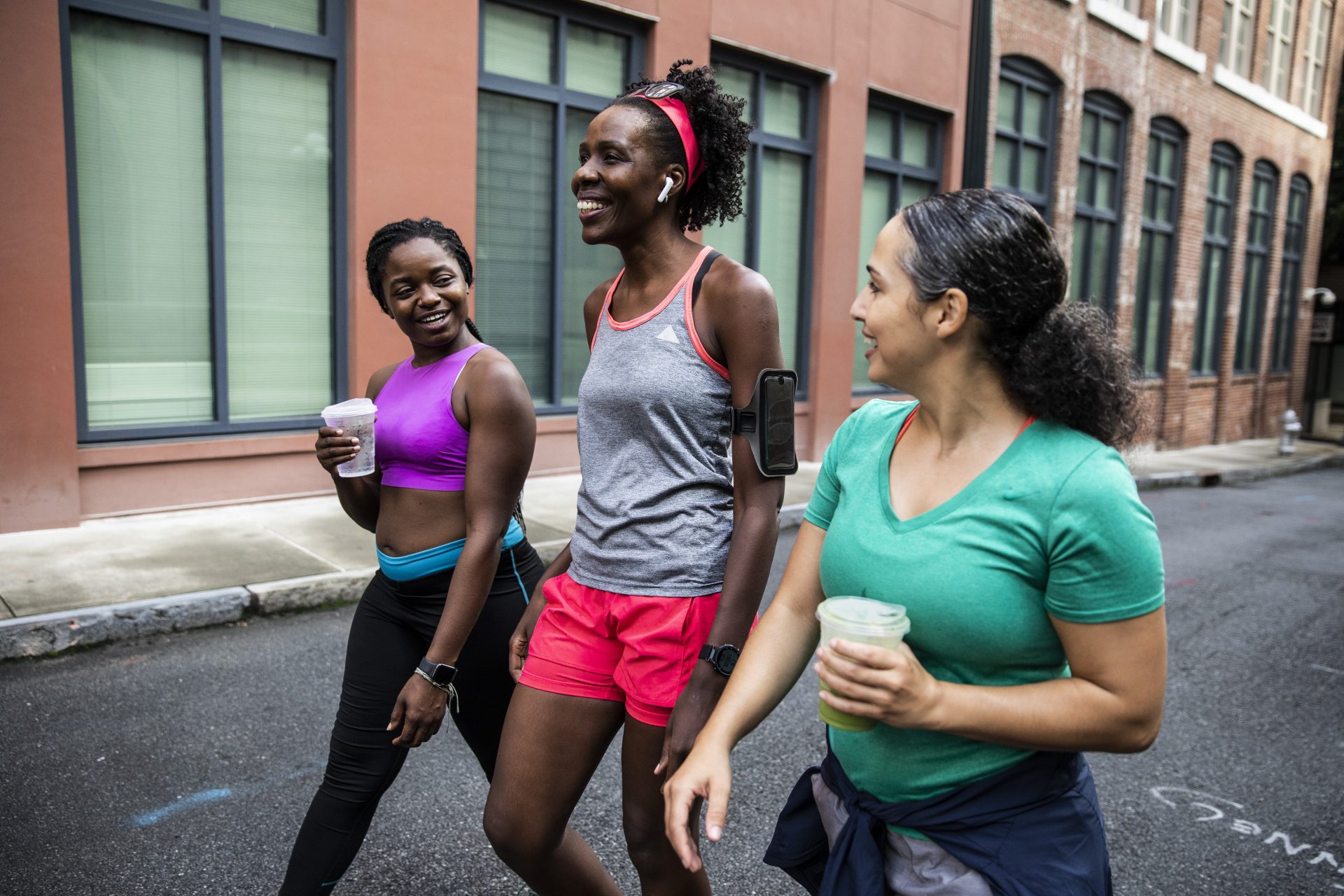“How long can I stay in activewear after my workout?”
Have you ever left the gym and found yourself still in activewear three hours later? Here’s the truth about what it’s doing to your skin.
For many of us, a perfect Saturday morning consists of a gym session with a friend followed by a post-workout brunch. To save lugging a damp towel around for the afternoon or wasting time by popping home first, there are times when we just skip the shower and head straight for the flat whites and pancakes.
While dousing yourself in deodorant and perfume might be enough to stop the other cafe diners from staring, sitting in the same kit you just sweated in during a spin class probably isn’t the most sanitary decision. But is it really that bad for our bodies to delay a wash or can we get away with it every so often?
What happens to our skin when we exercise?
“When your heart rate increases during exercise, it boosts circulation and blood flow to your skin,” says Dr Sonakshi Khorana, a dermatologist doctor and ambassador for skincare brand Faace. And when we move for longer or more intense periods, we sweat. That may give you an instant glow, but perspiration isn’t great for our skin in the long run.
You may also like
Sweat and exercise: why we should stop worrying about how much we’re sweating
“Sweat during exercise helps to cool your skin down but has the potential to dry out the skin through the loss of fluids. The sodium in sweat can also sting and irritate your skin,” explains Dr Khorana.
When the salty water sits there for a long period of time, it can shift the balance of the skin microbiome and lead to fungal and bacteria overgrowth, she adds. That is why washing straight after exercise is about more than just getting rid of the smell but also removing the germs and giving yourself a chance to apply rehydrating products.
“You should wash your face immediately after a workout. Damp skin is more absorbent (as long as that dampness isn’t sweat) so immediately after washing is a good time to apply a mask or treatments to irritated skin, too,” she adds.

A quick rinse of the face isn’t enough though, she says. That bacteria can be found all over your body and is likely to multiply further if it’s sitting under workout clothes. “Washing your body is as important as washing your face. Sweaty gym clothes can trap sweat and dirt and you can get chafing and certain rashes from materials rubbing against salt and dry skin. A build-up of sweat in skin folds can also lead to overgrowth of yeast causing a rash called intertrigo,” Dr Khorana adds.
Other common problems that can come from leaving sweat for too long are athletes’ foot (the clue’s in the name) and, for women in particular, yeast infections such as thrush. Dr Khorana recommends rinsing off as soon as you’ve cooled down and absolutely no later for proper skincare after a sweaty session.
Can I stay in gym kit if I don’t sweat?
Not all workouts are going to leave us with salt crystalising on our skin and bacteria thriving on our sweat, so is it still bad to remain in your yoga kit after a simple yoga flow? “If you’ve done a lower intensity session and didn’t actually sweat, then feel free to stay in your activewear until you get back home – about an hour or two is OK. But I would never advise staying in your activewear for several hours and going about your day without showering and changing,” says Dr Khorana.
You may also like
How often should you wash activewear? How to kill off germs while protecting gym clothes
That’s because our pores have still been opened from the extra blood flow, whether you felt them expelling sweat or not. Not to mention, gyms and classes can be quite unsanitary places – you don’t want to transfer the germs on your leggings from lying on a well-trodden mat to your desk chair, sofa or bed.
If you are going to run (by which we mean: gently walk) from your low-intensity class into the office or back home without a shower, choosing the right materials to help reduce bacteria spread is important. “Wearing thick fabrics that trap sweat and dirt can cause a build-up of sweat which leads to even more extreme overgrowth of yeast and bacteria, so look for breathable fabrics that don’t irritate your skin,” she says. There are all sorts of polyesters that are now made with sweat-wicking and breathability in mind, or bamboo is a natural, breathable alternative.
But the smartest thing you can do is avoid scheduling your toughest workouts for times you don’t have time to rinse off – or at least meal prep your recovery food so you don’t have to choose between showering and eating.
Images: Getty
Source: Read Full Article
